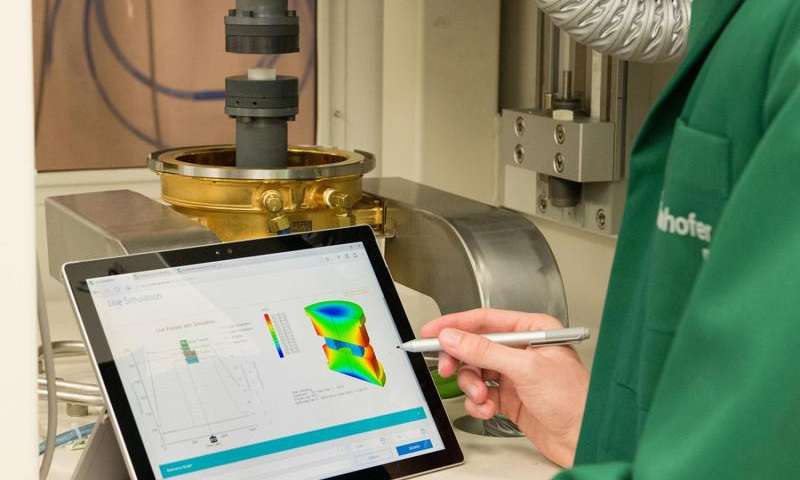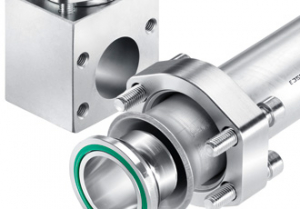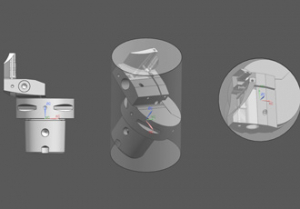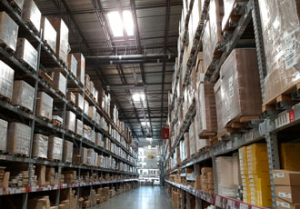Industry 4.0 controls precision glass molding machine

When manufacturing optical lenses, every detail counts. In order to stabilise and optimise the manufacturing process, Fraunhofer researchers are using digitalised processes. At the Optatec trade fair in Frankfurt from June 7 to 9, Fraunhofer experts will be showing how Industry 4.0 approaches can improve the development and manufacture of glass optics (hall 3.0, booth D50).
The glass blank that Holger Kreilkamp from the Fraunhofer Institute for Production Technology IPT inserts into the precision glass molding machine is no larger than a European twenty-cent coin.
At the press of a button, the process chamber closes, a vacuum pump hums, and the forming process has begun inside the machine. For the first time, this process can now be followed on a tablet PC, where a simulation shows in real time how the blank conforms to the shape of the tools that are pressing it and how the lens then slowly cools.
At the same time, diagrams supply information about where the various forces are acting and how the temperature changes. This is a genuine first: "Before, the press was a black box – nobody could see inside," explains the mechanical engineer.
Looking inside the black box is just one component of the new concept with which Fraunhofer researchers are currently optimising the mass production of optical lenses.
"Industry 4.0 aims to digitalise the entire manufacturing process, and the optical industry has hardly exploited this potential at all," says Laura Niendorf, specialist for production efficiency at Fraunhofer IPT. "Our studies show how data can be used to optimise the whole manufacturing process – from simulating the process, making molds and coating tools to shaping parts and quality testing the finished optics."
"One of the biggest problems to date has been that the data created during the individual process steps was not systematically recorded and therefore not utilised," adds Niendorf. For example, simulations were stored in a different file format than the documentation for the forming process, tool wear or quality inspection.
To be able to benefit from the digital information from all process steps, Fraunhofer researchers have developed independent, web-based software. This software runs on standard devices such as laptops, smartphones and smart glasses, and requires no installation.
All users – from developers to quality control inspectors – have access to a shared process database. This makes it quick and easy to recognise correlations and connections – for instance between process parameters and quality.
"The actual challenge of the new approach consists in extracting from the huge volumes of data precisely the information that offers added value," explains Niendorf. Using time series and correlation analyses, she studies how factors such as the glass quality, the age of the tools and their coatings, and the oxygen partial pressure in the machine affect the quality of the finished lens.
The first milestone has now been reached: the view inside the black box of the precision glass molding machine, which experts are exhibiting at Optatec, hall 3.0, booth D50, proves that effective monitoring is possible.
Next, the Fraunhofer researchers want to use real-time analysis of process data to ensure that the required quality is achieved and set up an automatic alarm system for when deviations arise. "In the medium to long term, this will slash development and production times in the optics industry," summarises Kreilkamp.
Similar articles
More from Fraunhofer
- Interaction components for contactless human-machine operation 24th April 2017
- Flexible manufacturing on the road to production runs of one 21st February 2017
- Taking the momentum out of vibrations 2nd September 2016
- Industry 4.0 controls precision glass molding machine 13th June 2016



ed.jpg)








Write a comment
No comments